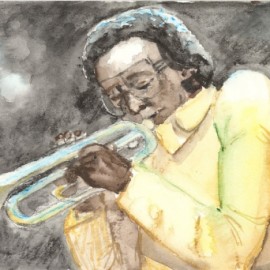Miles Davis said “It’s not the notes you play, it’s the notes you don’t play.” Fitness would do well to take notice of the wisdom there because, in the same way, a good training program is as much about the exercises you don’t do as the ones you do.
Exercise selection in fitness is often done like it’s a buffet. New exercises are on display on the internet, in a magazine, or during a class and everyone is encouraged to try. This can lead to a lot of inefficiency as well as higher risk. Some other ways to think about training would be to consider the following types of questions:
What Exercises Are High-Risk For Me?
If you live the average North American lifestyle then your body is very likely to be displaying a wide variety of dysfunctions. Aches and pains from the shoulders to the low back to the knees are usually biproducts of this. As a result, it’s important to have a sense of what exercises are not appropriate for you at this time. A good personal trainer can help you figure out what things your body is not prepared for. (Note: You’ll want to avoid trainers whose workouts revolve around high intensity or drill sergeant style coaching).
What Exercises Are Non-Relevant To My Goals?
If your goal is to lose weight then your focus should be on diet. For lack of a better way of saying it, every exercise is non-relevant to that goal. (For more on that, check out this post) Therefore, you can turn your attention to other goals in the gym such as moving better, being stronger, or maybe working to reduce some chronic pain. If you are trying to get stronger, a group fitness class that is low weight and high rep is more cardio than strength.
What Exercises Are Inefficient Or Redundant?
If you are only coming in 2 or 3 times per week, then it makes little sense to do isolation exercises like biceps curls. It is better to focus on bigger movements because you can train much more muscle in less time. Furthermore, when you use big movements like a push up or a chin up, you are already training your arms as they assist in the completion of the movement. The trick here is to make sure that you are strong enough to safely complete the exercises you have chosen.
Conclusion
The important thing to note here is that all of this asks you to think about what exercises you are doing and their level of appropriateness and relevance. If they don’t fit in well with your goal, then you should drop them. It’s just like Miles Davis said: you have to know what to leave out, and doing more doesn’t make it better.
PHOTO – Theaucitron, Miles Davis, License

Interesting---never expected to see Miles Davis in a fitness post, but you've done it. In his "Kind of Blue", etc, I guess you could say his music is focused, organized and pared down--not all over the place. I found this on the web--- " Davis 1st trained with famous players of "hot jazz," a hyper-complex, acrobatic style of playing torrential melodies at breakneck tempos. (like some fitness trainers?) He later changed to 'cool jazz'....focused his intensity into a laser beam of sound. " Anyway, I guess if you aren't doing everything, you have more energy for what you are doing. And we need every little bit of that--mental and physical!
Indeed, I try to bring a surprise every so often ;-) It is amazing though how much fitness connects with many other aspects of our world. That's a big theme for me and I find it endlessly interesting!